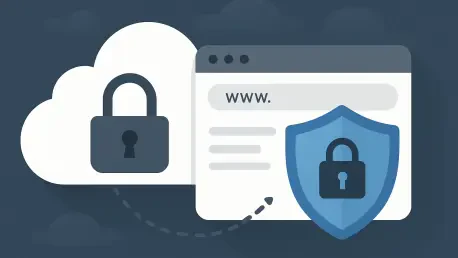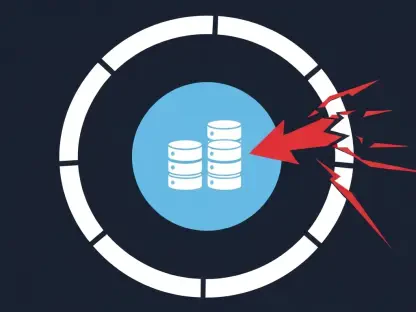I’m thrilled to sit down with Oscar Vail, a renowned technology expert whose insights into emerging fields like quantum computing, robotics, and open-source projects have positioned him as a thought leader in the industry. Today, we’re diving into the world of cybersecurity, focusing on IPVanish and its innovative Secure Browser feature. Our conversation explores how this cloud-based browsing solution enhances user security, the technology behind it, its integration into IPVanish’s desktop apps, and the broader implications for online privacy. Oscar’s expertise offers a unique perspective on how such advancements are shaping the future of digital protection.
What can you tell us about IPVanish and how the Secure Browser fits into their range of services?
IPVanish is primarily known as a VPN provider, offering tools to mask your IP address and secure your internet connection. What’s exciting is their evolution into a broader cybersecurity suite. The Secure Browser is a key part of this shift. It’s a cloud-based solution integrated into their desktop apps for Windows and macOS, designed to let users browse potentially risky websites without exposing their devices to threats. It’s a complementary layer of protection alongside their VPN, focusing on isolating browsing activity from local hardware.
What do you think drove IPVanish to create something like the Secure Browser?
I believe it’s a response to the growing complexity of online threats. Traditional VPNs are great for encrypting data and hiding your location, but they don’t always address risks like malware or trackers embedded in websites. IPVanish likely saw a gap—users needed a way to interact with the web without any malicious code touching their devices. By developing the Secure Browser, they’re tackling that head-on, showing a commitment to evolving beyond just VPN services into a full-fledged security provider.
How would you describe the core differences between the Secure Browser and IPVanish’s traditional VPN offerings?
The VPN focuses on securing your connection by routing traffic through encrypted servers, protecting your data in transit. The Secure Browser, on the other hand, is about isolating the browsing experience itself. It runs in the cloud, so websites are rendered remotely, and you’re essentially viewing a safe, visual stream of the site. No code, cookies, or trackers ever hit your device. It’s less about connection security and more about preventing direct exposure to web-based threats.
Can you break down how the cloud-based technology of the Secure Browser actually works for someone who’s not tech-savvy?
Absolutely. Imagine you’re watching a live video feed of a website instead of visiting it directly on your computer. With the Secure Browser, when you type in a web address, the site loads on a remote server in the cloud, not on your device. You see and interact with it through a secure stream, but nothing—no harmful scripts or trackers—ever downloads to your machine. It’s like having a protective barrier between you and the internet.
What’s the significance of Remote Browser Isolation in this context, and why does it matter for security?
Remote Browser Isolation, or RBI, is the backbone of the Secure Browser. It means the browser operates in a completely separate environment from your device. This is huge for security because even if a website is loaded with malware, that malicious stuff stays in the cloud and can’t infect your computer. It’s a proactive approach, stopping threats before they even have a chance to reach you, unlike traditional methods that react after something’s already on your system.
How does this technology manage to block threats like malware and trackers from impacting users?
Since the browser runs in the cloud, any website you visit is essentially sandboxed—isolated in a contained environment. Malware or trackers might exist on the site, but they’re stuck in that remote server. What you get on your end is just a clean, interactive image of the site. Nothing harmful is executed locally, so there’s no way for it to sneak onto your device or track your activity. It’s a pretty elegant way to neutralize risks.
With no cookies or history stored locally, how does that change the way users experience browsing?
It’s a double-edged sword. On one hand, it’s fantastic for privacy—there’s no trace of your activity on your device, no saved passwords or browsing history to worry about if someone gets access to your computer. On the other hand, it can feel less convenient. You might have to log in every time or lose personalized settings since each session starts fresh. It’s a trade-off, but for users prioritizing security over convenience, it’s a small price to pay.
What happens to a user’s browsing data once they close a session with the Secure Browser?
From what’s been shared, IPVanish ensures that all data from a browsing session is wiped clean the moment you exit the app. Since nothing is stored locally and each session is disposable, there’s no lingering information on either end. It’s like the session never happened—no history, no cookies, nothing. This approach minimizes the risk of data leaks or unauthorized access after you’re done.
Why do you think IPVanish chose to integrate the Secure Browser directly into their desktop apps rather than keeping it standalone?
Integration makes it more accessible and user-friendly. Before, as a standalone web app or extension, users had to jump through extra hoops to access it—remembering a URL or installing something separate. Embedding it into the VPN app for Windows and macOS streamlines the process. It’s right there when you open the app, reducing friction and encouraging more people to use it as part of their regular security routine.
How does this integration improve the user experience compared to the earlier standalone version?
It’s all about simplicity. With the standalone version, there was a learning curve—figuring out how to access and use it separately from the VPN. Now, it’s just a click away within the IPVanish app. You don’t need to manage multiple tools or logins; it’s seamless. This kind of design lowers the barrier for less tech-savvy users who might otherwise skip extra security features if they’re too complicated to set up.
What kind of online threats does the Secure Browser specifically protect against, in your view?
It’s particularly effective against web-based threats like malware hidden in scripts, phishing attempts embedded in sites, and trackers that collect your data. Since the browser renders everything remotely, even if a site tries to exploit vulnerabilities or install something nasty, it can’t touch your device. It’s a strong shield against the kinds of attacks that often slip past traditional antivirus software, which might only catch issues after they’ve already started causing trouble.
How does this compare to traditional antivirus programs when it comes to keeping users safe?
Traditional antivirus programs are reactive—they scan for threats and deal with them after they’re detected on your device. The Secure Browser is preventative. By running everything in the cloud, threats don’t even get the chance to reach your system. It’s not a replacement for antivirus, which can still handle local files or other issues, but it’s a powerful first line of defense for anything coming from the web, often stopping problems before antivirus would even need to kick in.
What’s your forecast for the future of cloud-based security tools like the Secure Browser in the broader tech landscape?
I think we’re just at the beginning of seeing cloud-based security become mainstream. As online threats get more sophisticated, tools like the Secure Browser will likely become standard, especially for businesses and privacy-conscious individuals. The ability to isolate risky activities in the cloud is a game-changer, and I expect we’ll see more providers integrating similar features into their offerings. Over the next few years, this could redefine how we think about safe browsing, moving away from local defenses to remote, sandboxed solutions as the norm.









